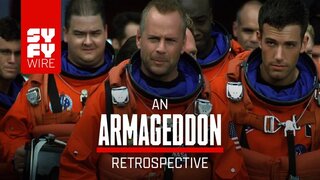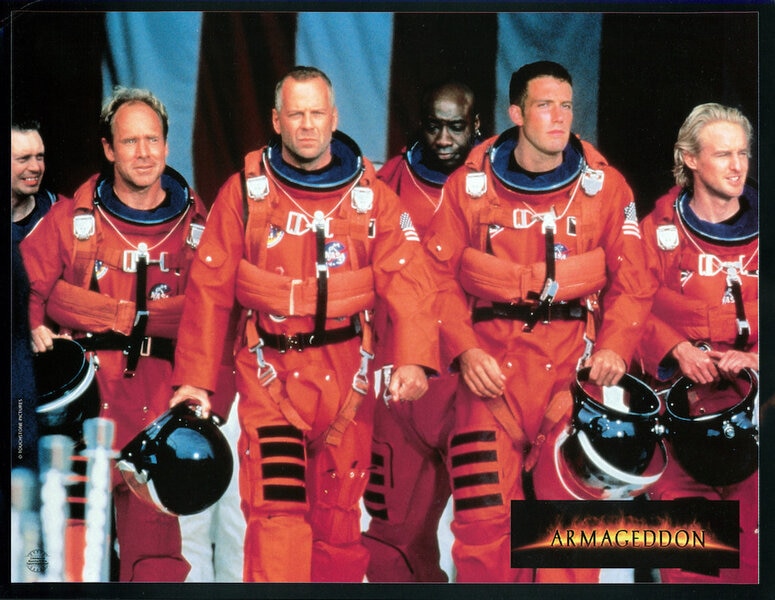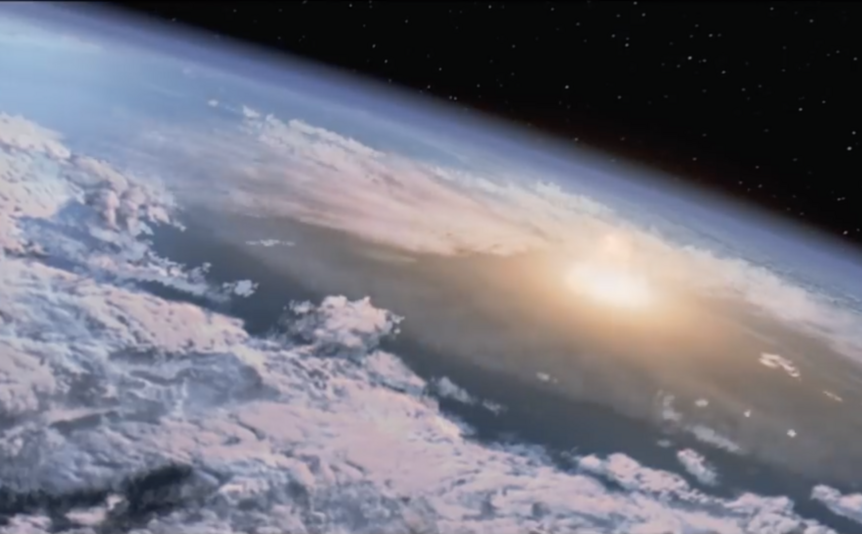Create a free profile to get unlimited access to exclusive videos, sweepstakes, and more!
Which Is the More Accurate Apocalypse: Deep Impact vs. Armageddon?
1998 was the summer of the asteroid apocalypse with Armageddon and Deep Impact, but which was more scientifically accurate?
In the early nineteenth century, scientists first uncovered evidence of the sudden disappearance of the dinosaurs at some point in the distant past. It appeared as though there had been some widespread extinction event, but it was unclear precisely what that event was, and it remained that way for more than a century. By the 1970s, scientists had discovered an unusual spike in iridium at various sites around the world, at the same time as the end-Cretaceous extinction.
Because asteroids have higher levels of iridium, scientists quickly started wondering if the dinosaurs might have been wiped out by an impact event. The discovery of the Chicxulub impact crater around the same time further supported the asteroid extinction explanation, and the demise of the dinosaurs was solved. The realization that the dinosaurs, a group of animals who existed on this planet for hundreds of millions of years, were so effectively knocked on their scaly keisters by an impact planted a seed of fear in our collective minds. And those seeds sprouted over the next few decades in the form of disaster movies.
RELATED: That time Michael Bay shut down Ben Affleck's question about Armageddon's implausible plot
The impact disaster genre peaked, perhaps, in the summer of 1998 when audiences were treated to the near simultaneous release of Armageddon and Deep Impact (streaming now on Peacock!). History hasn’t remembered Armageddon well, but it has remembered it. Deep Impact, by contrast, has largely slipped under the radar as “the other asteroid movie.” In point of fact, the asteroid in Deep Impact is actually a comet, but we digress. Twenty-five years after their release, it’s time Deep Impact finally gets its laurels for being the better, and more scientifically accurate, end-of-the-world movie.
How Scientifically Accurate Was Armageddon?
A destructive meteor shower comes out of nowhere and destroys a space shuttle, just before striking a number of major population centers across North America. That, of course, is just the precursor to the big show, a Texas-sized asteroid on a collision course with Earth.
When the scientists of Armageddon first get their sights on their killer asteroid, they have only 18 days before it slams into our planet and (probably) kills just about everything on Earth. This is where the trouble begins. You can have a rock show up out of nowhere and smack into the planet, or you can have a really big rock, but you probably can’t have both. Astronomers have painstakingly searched the sky for anything and everything out there that could be coming our way. If there’s a space rock big enough to cause us any trouble, we’ve modeled its possible orbits out to decades or centuries into the future. The point is, we’d have more lead time than a couple of weeks.
Which is why the size choice is so bizarre. By way of comparison, the asteroid that wiped out the dinosaurs was like 4 - 6 miles across, while Texas is approximately 800 miles across. They could have dreamed up a much smaller world killer and made the timeline at least *a little* more believable.
RELATED: 'Armageddon,' 'Meteor' and more: Ranking the best planet-murdering comet movies
With basically two weeks to spin up a plan, get to the asteroid, and knock it around a little, world authorities get to work putting together the rag-tag team of committed scientists and astronauts who will come together using their specialized expertise to save the world from destruction. That’s what should have happened, anyway, but Armageddon made a different choice.
The plan to stop this planet-demolishing asteroid is to drill into its surface, detonate a nuclear weapon, and blow the killer rock to smithereens. Harry Stamper (Bruce Willis), a third-generation driller is tapped for the mission and insists on his own team. Bizarrely, the powers that be agree. Intentional or otherwise, there’s a certain anti-science, anti-intellectual funk hanging over the movie, and it’s never clear why drillers are sent instead of astronauts.
Ben Affleck, one of the movie’s stars, remarks on the same question during the DVD commentary saying, “I asked Michael why it was easier to train oil drillers to become astronauts than it was to train astronauts to become oil drillers and he told me to shut the f-ck up.”
Fair enough.
So, we get our drillers on the asteroid, and we start shoving our bombs beneath the dirt, and we’re expecting what to happen? This is an asteroid 800 miles across. Really stop to think about that. How powerful do you think a nuclear bomb is? And the idea that it will be more effective if you get it a little bit beneath the surface is laughable.
It’s a ridiculous plan – a plan so bad, in fact, that NASA allegedly uses its bad science in some of their trainings – which only makes sense if you’re willing to actively turn your brain off. There is, of course, a time and place for bad movies, even bad movies that made bank at the box office.
How Scientifically Accurate Was Deep Impact?
In May 1998, teenage astronomer Leo Biederman (Elijah Wood) peers through his telescope at a backyard star party and spies something no one has ever seen before. He sends his discovery to astronomer Marcus Wolf (Charles Martin Smith) who realizes it’s a comet on an intercept path with Earth.
This is where Deep Impact commits its first sin, though it’s a relatively small one. If a comet were bright enough to be seen through a backyard telescope, it’s highly likely it would have been sighted by more professional equipment considerably earlier. Discoveries by amateur astronomers aren’t unheard of, but this specific discovery scenario seems unlikely.
In terms of timeline, Deep Impact is a lot closer to reality, giving us a number of years between discovery and impact to come up with a plan of action. At the time of its release, Deep Impact was celebrated by scientists as an incredible technical achievement for its depiction of a tsunami in the film’s final act, but also for its overall scientific accuracy. That attitude toward Deep Impact remains largely intact today, with many scientists giving it high marks.
The first plan takes a similar approach as Armageddon, attempting to destroy the comet with space bombs. Here, the depiction of astronauts (not drillers) in space looks and feels realistic. The crew deals with the challenges of microgravity in a way Armageddon side steps by attaching tiny retrorockets to the boots to simulate gravity. All of these seemingly tiny things stack up throughout the course of a movie, making one feel real and the other… well, not as real.
When the plan to blow up the comet Wolf-Biederman fails, we turn our attention to the backup plan, an underground ark intended to protect some portion of humanity from the direct and downstream consequences of impact. It’s certainly possible, even in a post-DART world, that we might fail to deflect something and need contingencies.
RELATED: 90 thoughts we had while watching Armageddon and Deep Impact back to back
In the end, Deep Impact played a little bit loose with the truth, for narrative satisfaction. Using bombs to finally destroy what remains of the comet, just days before it was going to hit, is narratively satisfying but unrealistic. Blasting a space rock that close to impact basically turns it into a shotgun blast instead of a single bullet. You’re still going to do roughly the same amount of damage; you’re just going to spread it out a little bit. But it gets so much else right that we’re inclined to forgive it.
There is some artistic license but, by and large, Deep Impact delivers a story of collaboration in the face of immense odds. It delivers a story of victory against those odds, but not without a cost. And it feels authentic in a way Armageddon never could.
Catch the authentically satisfying Deep Impact, streaming now on Peacock!
































